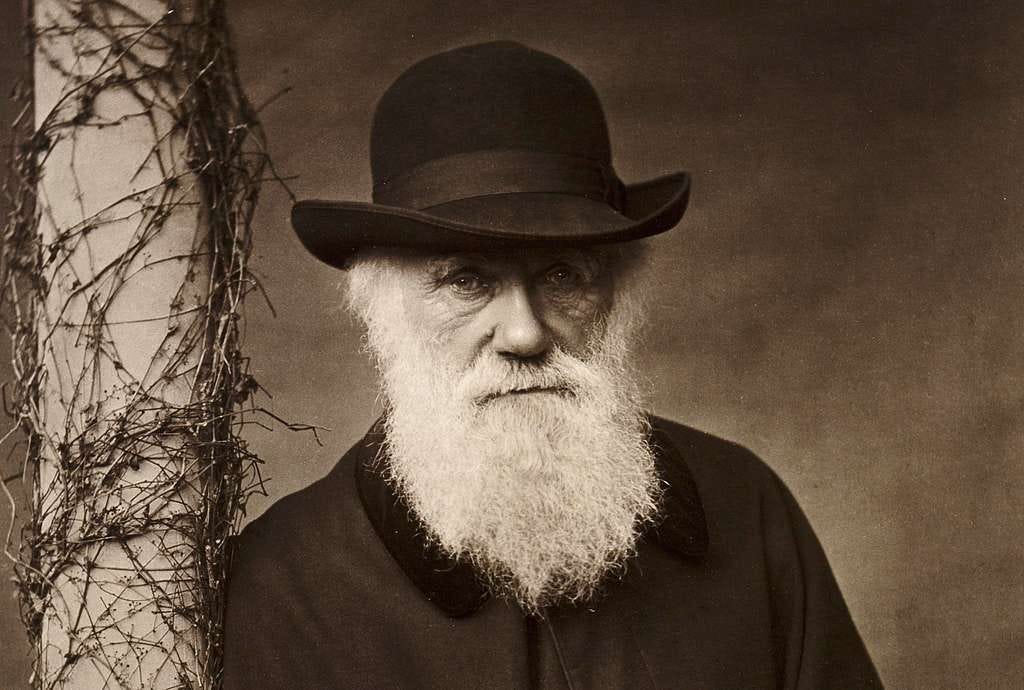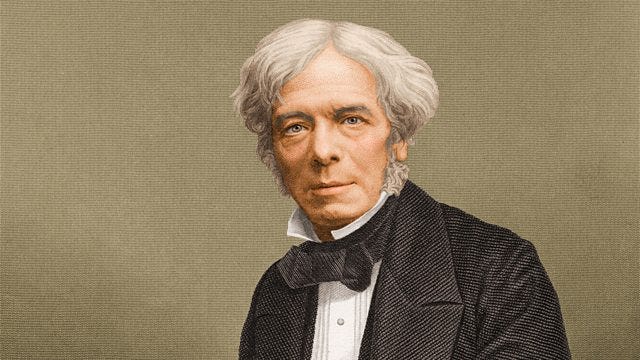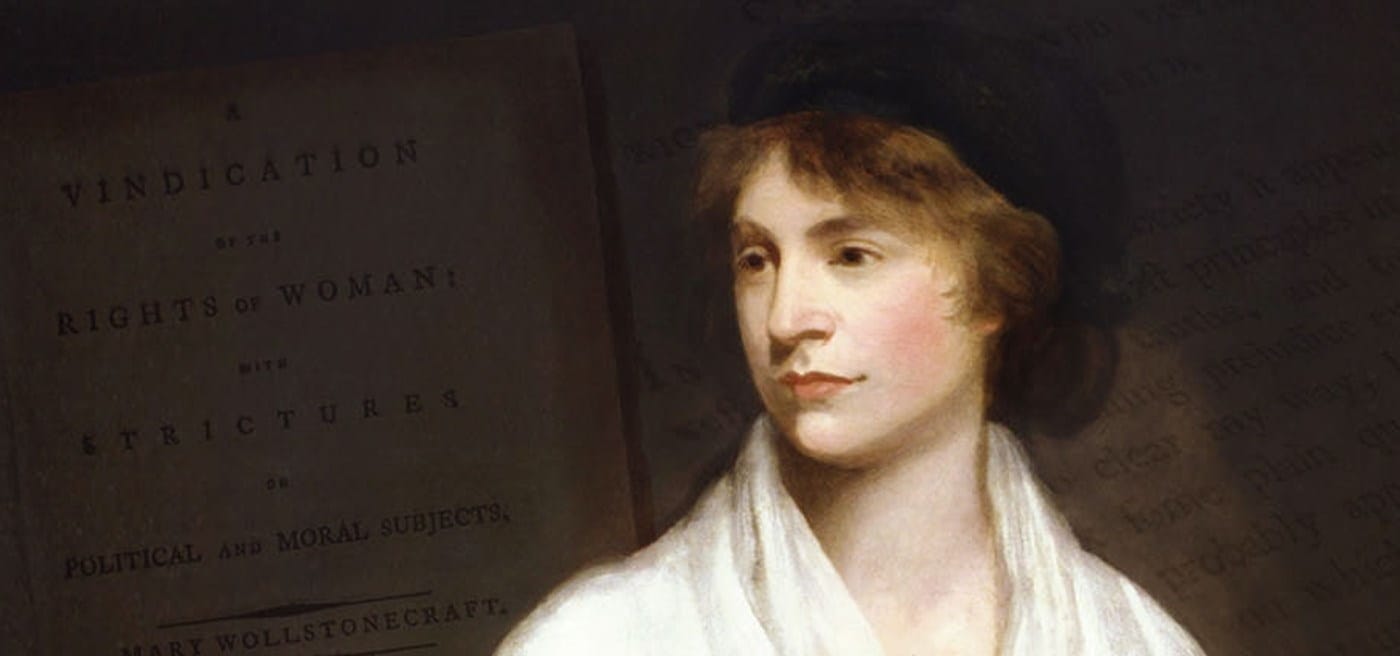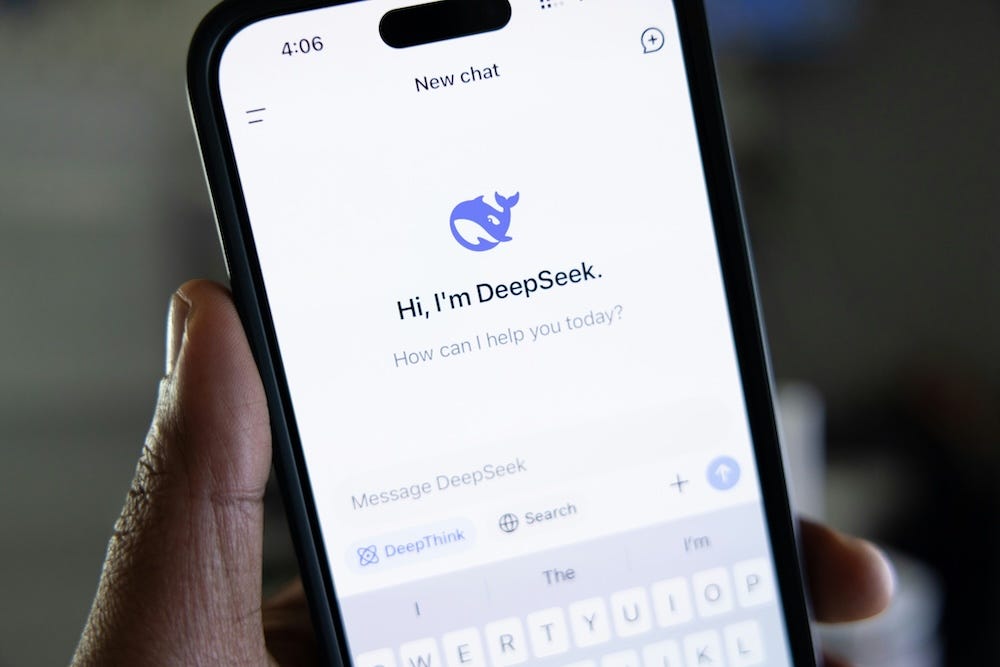Fish Food: Episode 629
Learning from Darwin, Faraday and Wollstonecraft; DeepSeek kerfuffle, AI agents in agencies, the problem with forecasts, and an encyclopedia of the unknown
This week’s provocation: What Darwin, Faraday and Wollstonecraft teach us about navigating an overwhelming world
I’ve been listening to Human Intelligence, a wonderful podcast from the BBC which features short (15 minute) episodes focusing on ‘brilliant thinkers with 50 stories that celebrate the human mind’. Like one of it’s subject thinkers Socrates, Human Intelligence is concerned with how people think rather than what they think, and I loved the way that they organised an impressive collection of thinkers into three categories: disruptors, teachers, and collectors.
We tend to think that everything is new these days but of course we’ve seen many periods of rapid technological change before and I always think it’s amazingly useful to look at lessons from history and history-makers as a lens for understanding modern challenges and opportunities (my books are full of these kinds of stories). Paradoxically perhaps, sometimes the best way to understand how to navigate the future is to look through the lens of the past.
So for this week’s provocation I’ve selected three of my favourite episodes from the series and articulated (and built on) some of the most interesting takeouts that can help us to understand how we can navigate today’s fast-moving, sometimes overwhelming world.
The Collector: Charles Darwin and how obsessions can teach us to see the world differently
Charles Darwin wasn’t born a genius. In fact, if you’d met him as a young man, you might not have predicted his greatness. Darwin was curious, yes, but what set him apart was his relentless commitment to noticing. Darwin was a collector - not just of beetles or fossils, but of questions, patterns, and connections. And it’s this mindset, not some innate brilliance, that propelled him to change the way we understand life itself.
In his book ‘How People Learn’ Nick Shackleton-Jones describes how Darwin's early academic life was unremarkable and how he found conventional schooling uninspiring, struggling to engage with the standard curriculum. He was a mediocre student. He studied medicine before becoming disenchanted with the subject. His Father then directed him towards the clergy and he went to Cambridge to study for a Batchelor of Arts degree. Not, perhaps, the start that we would expect for the person that would change scientific understanding forever.
Nick’s book focuses on how we need to align learning experiences with individual passions and emotions to foster meaningful and transformative education:
‘When we learn, we are storing a complex pattern of emotional responses to our experience, which in turn modify our behaviour.’
Learning, says Nick, is deeply tied to what individuals care about. Throughout his early life Darwin struggled to find satisfaction in conventional career paths but he was simultaneously following where his curiosity led him - the natural world. It was this self-directed exploration and hands-on experiences that were pivotal in shaping his scientific insights and his revolutionary ideas. So what can we learn from the way that Darwin thought?
Look closer: One of his greatest gifts wasn’t the scale of his thinking but the depth of his attention. He’d become obsessed with understanding the tiny differences in beetles and finches. He looked for the reasons behind anomalies and details that others overlooked, wanting to discover what conventional thinking was missing,
Follow the odd threads: Darwin’s finches are the stuff of legend, but it wasn’t the finches alone that led to his theory of natural selection. What mattered was how he followed the oddities. Why did finches on different islands have such different beaks? Why were fossils of extinct armadillos found near living ones of a much smaller size? He chased these questions doggedly, even when they disrupted the neat, comfortable beliefs of his time. He treated anomalies as breadcrumbs that could lead to insight.
Embrace the messiness: Darwin’s notebooks weren’t masterpieces of organisation - they were chaos (much like mine). Scribbles, half-formed thoughts, questions he didn’t yet know how to answer. This messiness wasn’t a weakness; it was essential to his process. Instead of waiting for the perfect idea, Darwin collected and recorded everything, trusting that clarity would emerge through the act of collecting itself.
One of his lesser-known experiments involved earthworms. For years, Darwin painstakingly observed their behaviour in his garden, even devising experiments where he played music for them (seriously) to see how they reacted. This eccentric dedication to the unglamorous revealed their crucial role in soil health - a discovery that still impacts agriculture today. Don’t wait for your ideas to be neat. Start collecting observations, even if they feel unconnected or raw. Trust that, like Darwin, you’ll make sense of it later.
Build your knowledge network: Darwin didn’t work alone. He relied on a vast network of people, from sailors and farmers to fellow scientists, to send him specimens, share their knowledge, and challenge his ideas. These collaborations weren’t just helpful; they were essential to his success.
Knowledge is collected, not created. Darwin’s brilliance lay not in a single ‘aha moment’ but in his lifelong habit of collecting details, questions, anomalies, and connections. He reminds us that knowledge isn’t about sudden flashes of genius. It’s about building something slowly, brick by brick, through curiosity and the courage to follow where it leads.
The oft cited ‘follow your passion’ may be good advice for those of us that can immediately identify what our passion is. But it’s much less useful advice for the many of us that can’t. What Darwin’s story tells us is that where we can’t follow our passion, we should follow our curiosity.
The Teacher: seeing the invisible, and what Michael Faraday can teach us about discovery
Michael Faraday didn’t just change the world—he helped us see it differently. Born the son of a blacksmith, with little formal education, Faraday rose to become one of the greatest experimental scientists in history. His work on electromagnetism laid the foundation for everything from electric power grids to smartphones. Yet his genius wasn’t in being born extraordinary, it was in how he saw the world.
Exploration generates possibility: Faraday’s story begins humbly. He was a bookbinder’s apprentice, binding volumes of scientific texts he couldn’t afford to own. But rather than see himself as a tradesman, he treated every book as a door into a world of questions. This self-taught hunger for knowledge set him apart, and he even dared to send a bound copy of his lecture notes to Sir Humphry Davy, one of the leading scientists of the time. Davy, impressed by Faraday’s ambition, gave him a role as his assistant - a position that changed the course of Faraday’s life.
Michael Faraday didn’t just work in a lab, he lived in his notebooks. Across his lifetime, he filled more than 16,000 paragraphs with observations, questions, and half-formed ideas. These weren’t polished or organised; they were raw and chaotic, a mirror of his relentless curiosity. But within this chaos lay the seeds of discovery.
Faraday wasn’t afraid to revisit his notes, picking up threads of unfinished thoughts and asking new questions. This habit wasn’t just documentation, it was a method of thinking, a way to track the evolution of his ideas over years (sidenote: I like to think of my blog in the same way). Faraday’s notebooks weren’t just a tool, they were his laboratory of thought.
Question what you can’t see, as well as what you can see: Faraday’s most famous discovery, electromagnetic induction, started with a simple, almost childlike question: Can electricity and magnetism affect each other? While others dismissed the idea, Faraday designed an experiment to test it. He wrapped two coils of wire around a ring and passed an electric current through one. To his astonishment, a current appeared in the other coil—a discovery that led to the creation of the electric motor. What made this extraordinary wasn’t just the result, it was Faraday’s ability to question the invisible forces at play. He believed that even things we can’t see could be understood through observation and experimentation.
Experiment without guarantees: Faraday didn’t stumble on his discoveries by chance. He conducted countless experiments, often risking failure or ridicule. His experiments with electromagnetic fields, for instance, weren’t immediately fruitful. Yet he kept tweaking, observing, and refining, driven by the conviction that the universe held answers if he asked the right questions. He failed repeatedly before succeeding, but his perseverance gave the world the principles behind modern electricity.
See the beauty in simplicity: Faraday’s brilliance wasn’t in overcomplicating ideas, it was in simplifying them. His famous lectures, including The Chemical History of a Candle, turned scientific concepts into vivid, relatable stories. In his experiments, too, he often sought elegance: simple designs that revealed profound truths.
Like Darwin, Michael Faraday reminds us that discovery isn’t about being a genius; it’s about seeing what others overlook, asking questions others won’t, and persisting where others quit. His ability to see the invisible forces of nature changed the way we live, but more importantly, it shows us that true innovation comes not from knowing all the answers but from having the courage to explore the unknown.
The Disruptor: Mary Wollstonecraft, the rebel who redefined thought and society
I think, for me, this was the most inspiring out of all the Human Intelligence episodes. Mary Wollstonecraft didn’t just challenge the norms of her time, she dismantled them with razor-sharp arguments, personal defiance, and a vision of equality that remains radical even today. It’s difficult to capture just how much of a disruptor she was to conventional norms, in every sense: in her thinking, her writing, and her life. But what made her truly revolutionary wasn’t just what she believed, it was how she believed it. Her approach to thought was daring, dynamic, and deeply personal, offering lessons that still resonate with those challenging the status quo today.
Thinking was, for Wollstonecraft, survival: Wollstonecraft’s approach to thought was rooted in her own struggles. Growing up in a dysfunctional household with an abusive father, she learned early that independence wasn’t a luxury, it was a necessity. Her ideas about education, equality, and autonomy weren’t just theoretical; they were forged in the fire of personal experience.
This grounded her thinking in reality. In A Vindication of the Rights of Woman, she didn’t write about abstract freedoms, she argued that women needed education to survive and thrive as rational, self-reliant individuals. Her disruptive power came from this fusion of personal pain and intellectual clarity, making her work both deeply human and unflinchingly logical.
To be disruptive, you have to be bold: Wollstonecraft didn’t just argue that women should be educated; she went further, dismantling the very idea of what it meant to be a ‘woman’ in 18th-century society. She rejected the sentimentalised image of women as delicate, ornamental beings created solely to please men. Instead, she called for women to cultivate their minds and contribute meaningfully to society.
In one of her boldest ideas, she proposed co-educational learning, a shocking concept in a world where boys and girls were raised to occupy entirely separate spheres. She argued that men and women, destined to live as equals in marriage, should be educated together to foster mutual respect and understanding. This wasn’t just a critique of education, it was a reimagining of gender itself.
Cut through the rhetoric: Wollstonecraft had a gift for cutting through pretension. In her response to Edmund Burke’s Reflections on the Revolution in France, she dismantled his lofty rhetoric by redefining concepts like beauty and the sublime. While Burke associated these with elitism and tradition, Wollstonecraft argued that truth, simplicity, and equality were the real sources of beauty. This approach wasn’t just intellectual; it was a radical political stance. By aligning beauty with truth and equality, she made a clear statement: the ideals that governed society were built on shallow appearances, not substance.
Live your philosophy: Wollstonecraft didn’t just write about defiance; she lived it. Her personal life was as radical as her ideas. She travelled to revolutionary France alone, had a child out of wedlock, and publicly defied the conventions of marriage. These choices made her the subject of scorn and gossip, but they also embodied her belief that women should be free to live on their own terms.
This refusal to conform was dangerous, not just socially but economically. Wollstonecraft supported herself through writing, a feat almost unheard of for a woman at the time. Her life was a testament to her philosophy: freedom and equality aren’t just intellectual ideals, they’re battles fought every day. Her life wasn’t easy. Her ideas made her enemies. Her choices scandalised society, and her legacy was almost buried by detractors. But it endured, because truth and disruption, when combined, are impossible to silence.
Image: Charles Darwin, Michael Faraday, Mary Wollstonecraft, Wikimedia Commons
If you do one thing this week…
A lot of kerfuffle (favourite word) around DeepSeek this week after it’s new open source model R1 went live and was purportedly said to be as good as OpenAI’s latest o1 model - it was trained at a reported 10% of the cost and in a lot less time. And it’s faster too. I’m not going to repeat what you’ve probably already read about it (if you need a comprehensive run down Azeem Azhar did a pretty good one). OpenAI reported that they believed the Chinese company had used ChatGPT’s model in its training (somewhat ironic for them to complain about using someone else’s work without permission, eh?).
DeepSeek's R1 model demonstrates that high-performance AI can be achieved with significantly lower computational resources and costs. So as Gary Marcus said, its ‘an economic revolution, and geopolitical wake-up call’ but its no smarter than existing models and it doesn’t bring us closer to AGI. The fact that its open source is significant as well, since that allows developers worldwide to build upon and improve the model, potentially accelerating AI innovation and diversifying its applications.
Although Anthropic’s CEO pointed out that the Chinese company likely spent more than is being reported, it’s still demonstrates that AI-as-a-service costs will fall enabling more companies to fine-tune models on premise rather than just use the same generic models that everyone is using, that the dominance of capital-heavy AI firms could weaken, and that we may well see more ‘good enough’ models from China that can deliver 80-90% performance at a much lower cost, further democratising and scaling AI capability. To that point, Alibaba have just announced an AI model that they say surpasses even DeepSeek.
Photo by Solen Feyissa on Unsplash
Links of the week
Further to my post last week about agentic AI, this was a useful take from Jack Smyth at Jellyfish on how the agency is already building and using AI agents. Jack also posted about the concept of CTAi (Call-to-Agent), the idea of optimising for AI agents which is probably going to be the new SEO
‘Here’s the problem with forecasts: some of them are right, and some of them are wrong, and by the time we find out which is which, it’s too late. This leads to what we might call the forecasting paradox: the test of a useful forecast is not whether it turns out to be accurate, but whether it turns out to prompt some sort of useful action in advance’. Wise words from Tim Harford
Piotr Bombol (friend of ODF) has just launched Adaily 2.0, a ‘full-fledged AI suite for ad agencies and marketing teams…running on curated data, proven frameworks’. You can check out the demo video here
A big piece of work here from WARC on the balance of performance and brand (the binary brand vs performance debate has always been unhelpful and this shows how they work together)
Some lovely examples of ‘haptic nostalgia’ in this thread
Quote of the week
‘I wanted to understand things and then be free of them. I needed to learn how to telescope things, ideas. Things were too big to see all at once, like all the books in the library...everything laying around on all the tables. You might be able to put it all into one paragraph or into one verse of a song if you could get it right.’
Bob Dylan (HT NITCH). I went to see the Dylan biopic ‘A Complete Unknown’ last week and it was excellent. Timothy Chalamet is a revelation in it.
And finally…
I like the idea of Wikenigma, an ‘encyclopedia of unknowns’, which lists ‘scientific and academic questions to which no-one, anywhere, has yet been able to provide a definitive answer’. HT Kottke
Weeknotes
This week I was in the Middle East working with my banking client. Next week I’m back working with Diageo again, and also moderating an event for the launch of a report that I’ve authored based on some fascinating research into marketing operating models - more on that next week.
Thanks for subscribing to and reading Only Dead Fish. It means a lot. This newsletter is 100% free to read so if you liked this episode please do like, share and pass it on.
If you’d like more from me my blog is over here and my personal site is here, and do get in touch if you’d like me to give a talk to your team or talk about working together.
My favourite quote captures what I try to do every day, and it’s from renowned Creative Director Paul Arden: ‘Do not covet your ideas. Give away all you know, and more will come back to you’.
And remember - Only dead fish go with the flow.










Hi Neil - this has made it to my top 3 (ever growing) list of ODF's pearls of wisdom - thanks for sharing
respect: Stephen